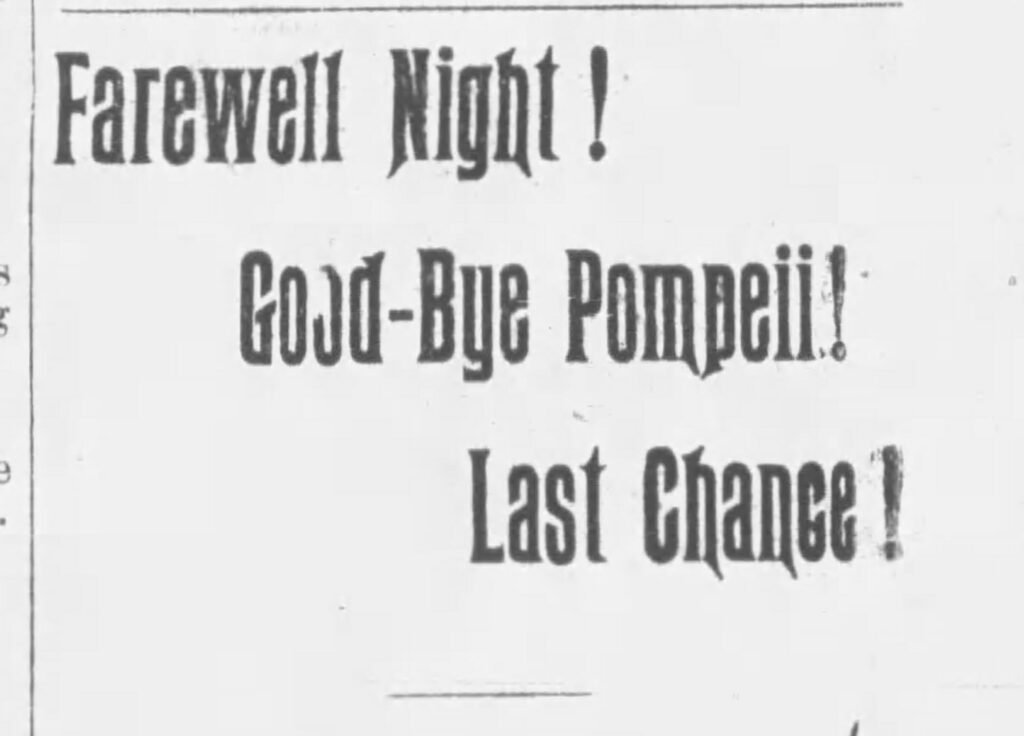The ancient Roman cities of Pompeii and Herculaneum and the surrounding areas were devastated towards the end of August 79 AD when Mount Vesuvius erupted. The volcanic eruption produced clouds of super heat gas, molten rock and hot ash that rained down on this region of Italy.
Some 1,812 years later, the destruction of Pompeii was recreated nightly starting on July 28 at the Scranton Driving Park in Scranton. The show, The Last Days of Pompeii, was presented by Pain’s Gorgeous Production. It featured some 350 performers and a realistic eruption of Vesuvius each evening that was powered by a massive fireworks display. Tickets for this spectacle ranged from good seats for 50 cents, reserved seats in the grand stand for 75 cents, a private box with six seats for $6 or $50 for the entire run of the show while in Scranton.

An advertisement for the show “Last Days of Pompeii” that was held at the Scranton Driving Park starting on July 28, 1891.
The performance on August 7 lived up to the destruction depicted nightly. The fireworks from the show started a fire at the Driving Park. The fire destroyed numerous stables at the park and a nearby barn. Through the efforts of the performers, they stopped the flames from ignited the numerous barrels of black powder and fireworks by forming a bucket brigade.
Below is the account of the blaze from the pages of the August 8, 1891 edition of the Scranton Times. Despite the fire the show went at the Driving Park until August 22.

Scranton Times – Aug. 8, 1891
You can read more about the Scranton Driving Park and the city’s other early race tracks in this Sunday’s local history column by Erin Nissley.

Brian Fulton has been the librarian at The Times-Tribune for the past 15 years. On his blog, Historically Hip, he writes about the great concerts, plays/musicals and celebrity happenings that have taken place throughout NEPA. He is also the co-host of the local history podcast, Historically Hip. He competed and was crowned grand champion on an episode of NPR quiz show “Ask Me Another.” Contact: bfulton@timesshamrock.com; 570-348-9140; or @TTPagesPast




